Anatomical theaters: not exactly a performance, but certainly an art
By Pictolic https://pictolic.com/article/anatomical-theaters-not-exactly-a-performance-but-certainly-an-art.htmlSince ancient times, the study of medicine is inextricably linked with autopsy, that is, the autopsy of corpses. Before starting the practice, doctors study the structure of the human body on dead bodies. For the most effective study of the body by a large number of people, anatomical theaters were invented.
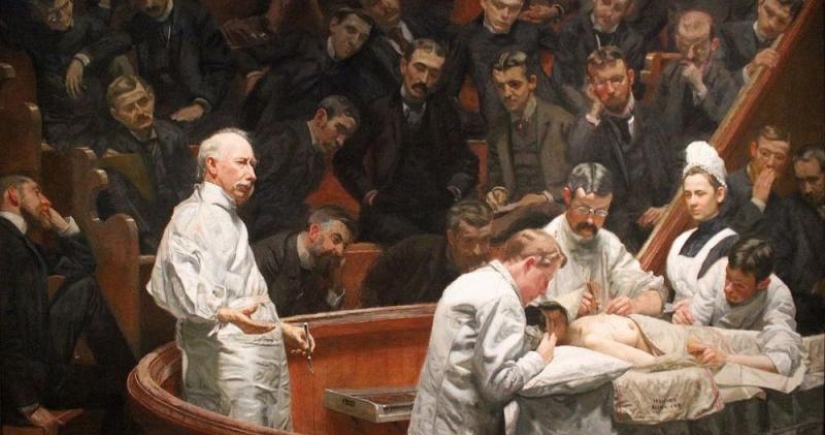
In medical universities, special rooms are equipped where future doctors observe how the teacher performs an autopsy. Recently, many educational institutions have moved to a more progressive method – they broadcast autopsies online.
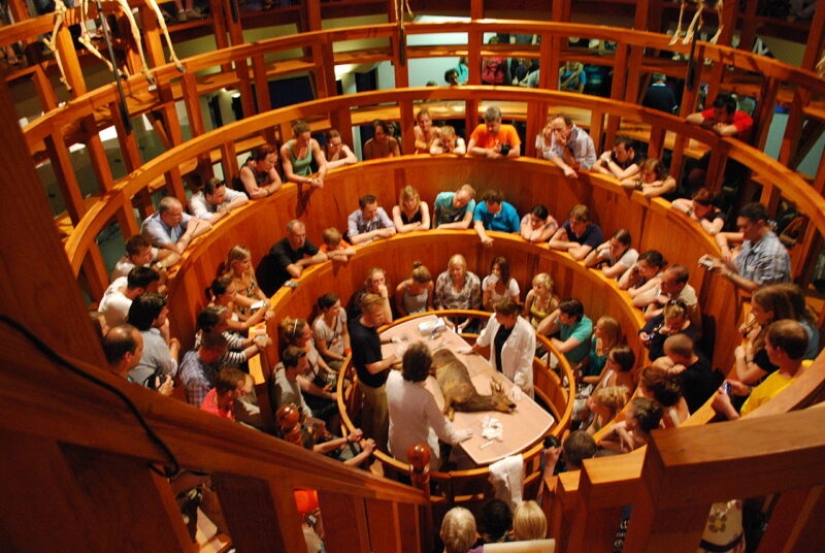
In the old days, things were much more complicated. And it's not even about the Internet and technology. A corpse for autopsy was a real rarity, since the church was extremely disapproving of any manipulation of dead bodies and their parts.
The Holy Roman Emperor Frederick II (1194-1250)issued a decree that every physician had to be present at the autopsy of dead bodies before being allowed to practice. But in reality, this was not easy to implement – the church allowed each university to conduct only a few autopsies a year.
This led to the fact that students and teachers stole corpses from the dead of hospitals, dug up those buried in cemeteries, and removed the bodies of those executed from the gallows. There was an illegal business. Professional body vendors could kill a person for profit. It is quite clear that any autopsy in the Middle Ages became a real event for the university and as many people as possible tried to attend it.
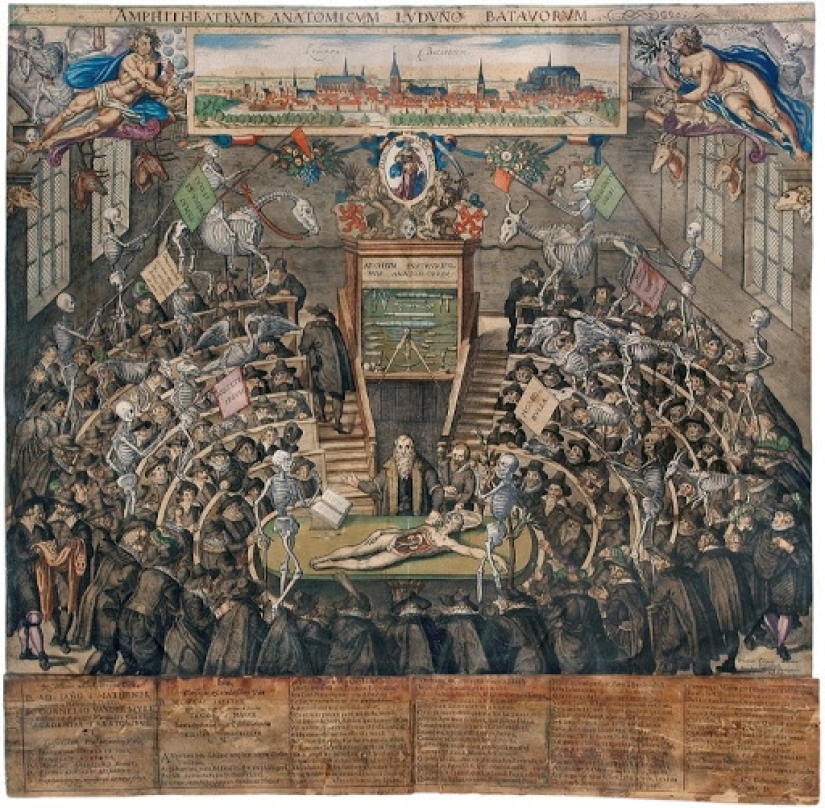
This is why they began to build anatomical theaters – special halls equipped to observe an autopsy or surgical operation by a large number of spectators. The first such premises appeared in the 15th century in Italy, which was considered at that time the European center of sciences and arts.
The famous surgeon and anatomist of the Renaissance Alexander Benedetti in 1493 describes the ideal organization of the anatomical theater of his era:
As you can see, the autopsy was not only a learning process, but also a spectacle for the curious, who were willing to pay for it. And this is quite normal, because the choice of entertainment for people in the Middle Ages was very modest and specific.
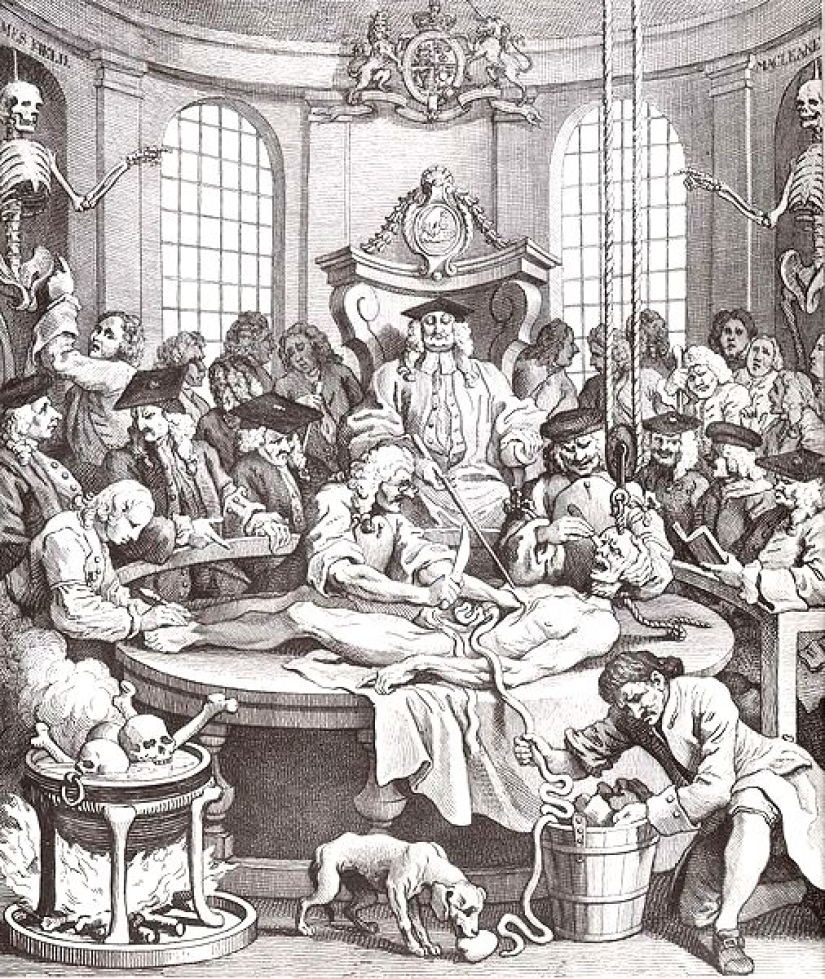
Anatomical theaters were mostly free-standing buildings, often located outside the university campus. At first, any suitable premises were used for this purpose, renting them for autopsy. Later, they began to build buildings designed for this purpose.
The first permanent anatomical theater appeared at the University of Padua in northern Italy in 1594. It had six rows, accommodating at least 250 spectators. The first rows were the most honorable. They were occupied by university professors, rectors, city officials, and distinguished guests. The seats in the other rows were reserved for ordinary observers.
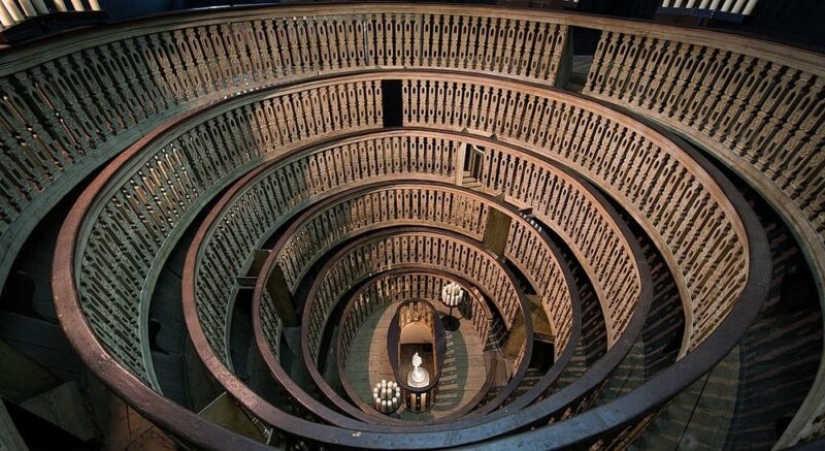
There were no chairs in the anatomical theater in Padua. Everyone present, regardless of rank and age, had to stand up during the autopsy. The process of autopsy with the extraction of organs, their demonstration to the venerable public and a lecture was lengthy. Sometimes a full autopsy would take two weeks. In such cases, the audience came to the theater daily.
During the autopsy of the corpses, a kind of "intermission" was arranged, during which the guests were entertained by musicians and storytellers. Since there were no ventilation systems in those days, and drafts that walked through the natural openings of the room did not always cope with odors, scented candles and whole braziers with incense were lit in anatomical theaters. Most often, the autopsy season was in the colder months of the year, as the dismembered body decomposed very quickly in the heat.
The Anatomical Theater in Padua was used until 1872, when the medical faculty of the university separated and moved to the premises of the Monastery of St. Matthew. Despite this, the theater was preserved in its original form, and it is still considered the pride of the educational institution.
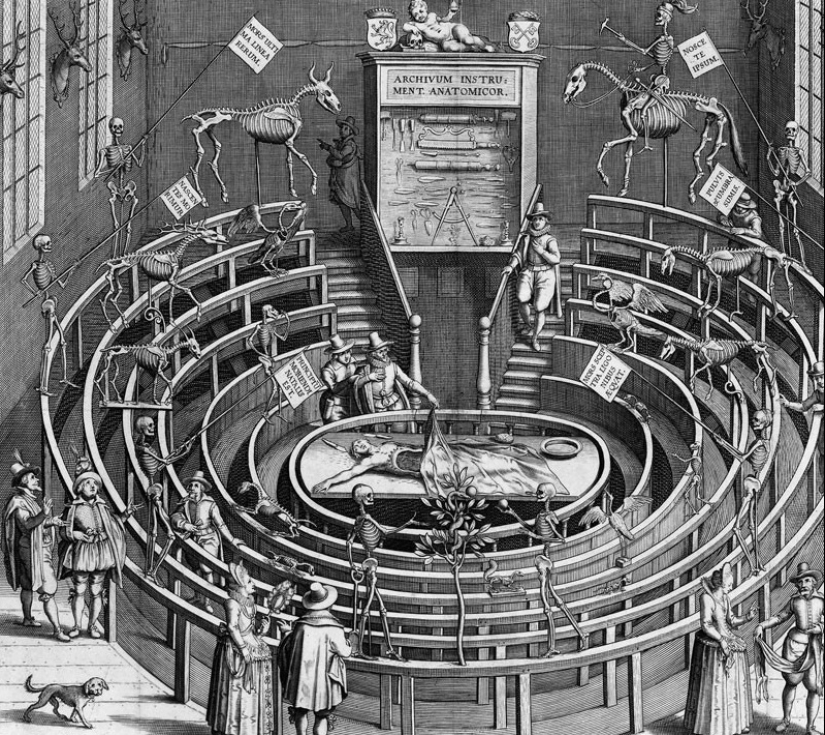
Outside of progressive Italy, the first anatomical theater appeared three years later, in 1597 in the Dutch city of Leiden. It was founded by Peter Pau, Professor of Anatomy at Leiden University. In the theater hall, there were traditionally six rows, but they were made wider than in the theater Padua.
The extra space was needed to allow the theater to be used not only for autopsies, but also for other educational activities. The hall was multi-purpose – in winter, autopsies were held there for both doctors and spectators, and in summer, exhibits from natural science exhibitions were placed between the rows.
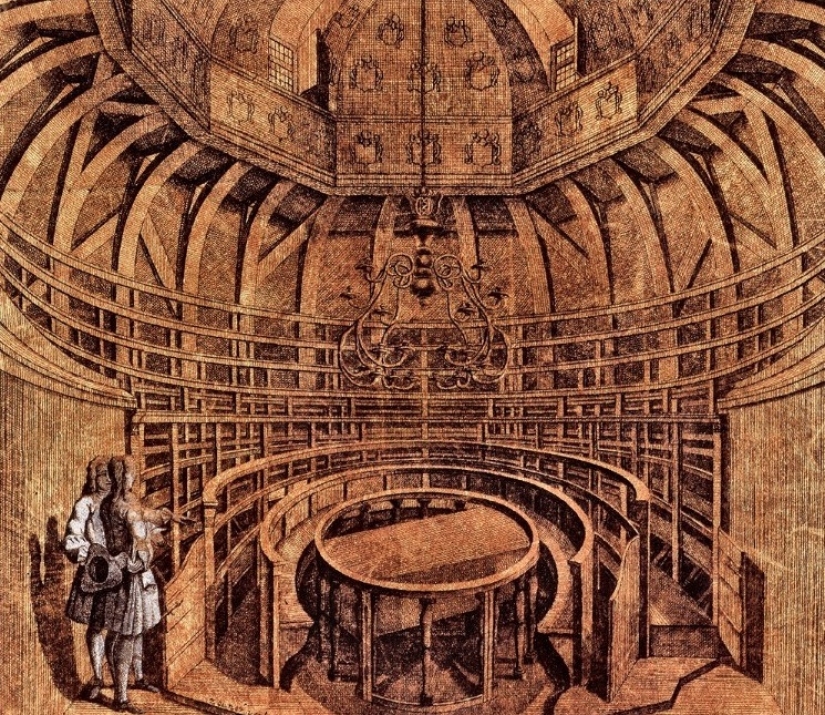
The Leiden Anatomical Theater showed skeletons of people and animals, Egyptian mummies, archaeological finds and just curiosities from around the world. It was a real tourist attraction in Leiden, which everyone who visited the city on business or for entertainment was sure to visit. The Anatomical Theater operated until 1821, when the university's Department of Anatomy moved to another location.
In 1636, the anatomical theater appeared in London, in a building with an unusual name for the ears of modern people – "The Hall of Surgeons-Hairdressers". Barbers at that time almost always worked as doctors and had some medical knowledge, so it was not strange for anyone.
The London Anatomical Theatre copied the Paduan Theatre in many ways, but was equipped with only four rows for the audience. By reducing the number of rows, the English architects significantly expanded them, which made it possible to place chairs for all those present.
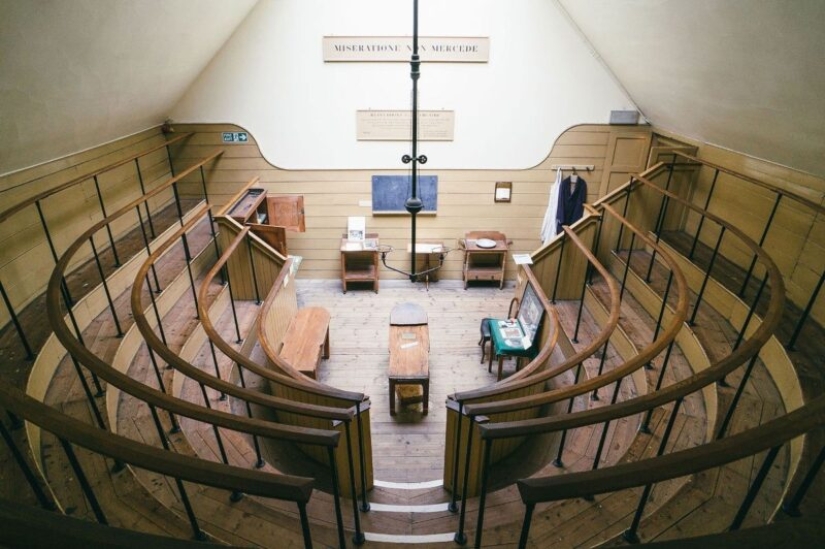
This was the first anatomical theater, which, in addition to functionality, was also striking in its design. The walls of the hall were lined with wood and decorated with zodiac symbols, and the seats for the public were covered with elaborate carvings. In the walls of the anatomical theater, niches were arranged in which skulls and skeletons were placed. Above all this, the bust of King Charles I dominated in a special recess under the ceiling, with the highest permission of which the theater was created.
Even then, the British loved system and order in everything, so autopsies were divided into three stages and took place over three days. After the autopsy was completed, the remains were taken away, and the hall was aired, after which a feast began there in honor of the completion of important work. What can you do, people were then not so scrupulous and less squeamish than today.
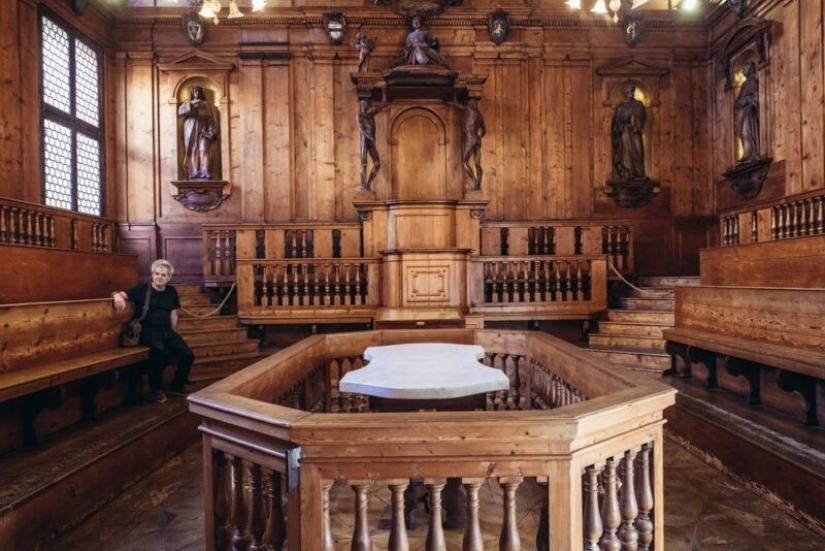
But the most luxurious anatomical theater was built in the Italian city of Bologna. It was built and decorated for a long 12 years. The first autopsy in its walls was carried out in 1637. The theater was not located in the university, but in the private palace of the Archiginnacio family. The walls of the room were decorated with spruce wood, and the ceiling was made of cedar. On a three-meter high dais was a professor's chair that resembled a throne.
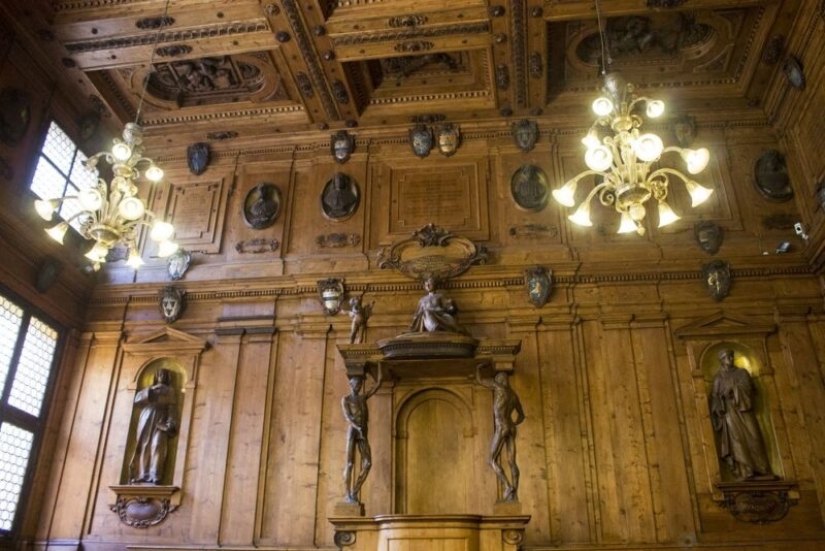
The theater itself was more like a ceremonial hall-it was decorated with sculptures and paintings. Above the professor's chair was a canopy of figures. The science of anatomy was represented by an allegorical sculpture of a woman and a Cupid holding a human tibia in his hand.
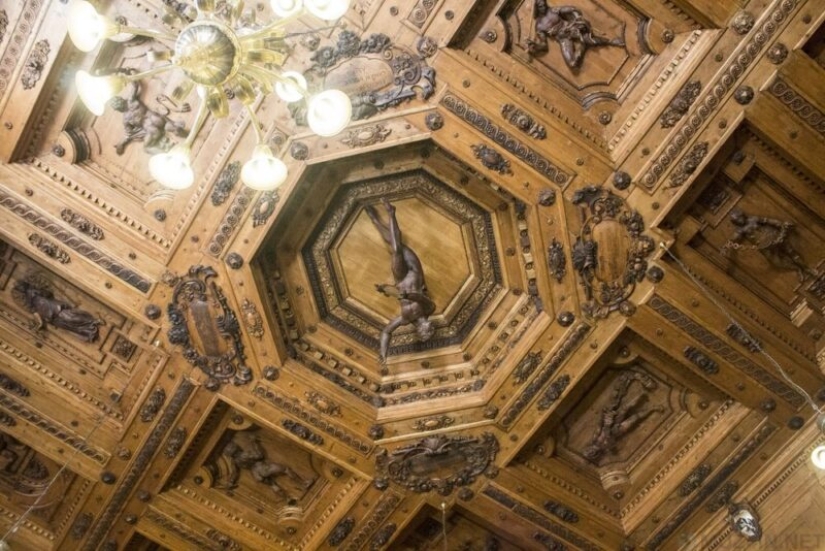
For three hundred years, the world has not known anything like this. No anatomical theater could surpass the sophistication and pomposity of the Bologna theater. During the Second World War, this wonderful monument of art and science was almost completely destroyed and specialists had to spend a lot of effort and many years to collect the details of the interior and restore it in its original form. Now the Anatomical theater in Bologna is again available to the public, but this time as a museum.
Keywords: Culture | Science | Students | Medicine | Doctors | Renaissance | Anatomy | Surgeons | Corpse
Post News ArticleRecent articles

There is never enough space in a child's room. You know, you need a bed, the closet is literally bursting with things, and you ...

Armenian artist Artush Voskanyan paints in the style of mannerism and calls the Italian painter of the XVI century Giuseppe ...
Related articles

All the things that surround us were once invented and changed over time, becoming more functional, safe and aesthetic. Any, even ...

The term "photography" appeared at the beginning of the XIX century, but the history of this art form has its roots in much more ...

The mystery associated with the lack of memories of the first 3 -3.5 years of a person's life has haunted scientists for many ...

In our days, the friendship with the ex-partners is normal, civilized and progressive. In this article we are told in journals and ...